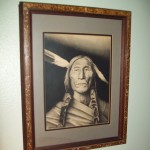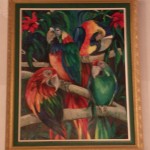
Here at Art Center Information we feel that all artists agree that learning the fundamentals is the most important element in creating and composing fine art. One of the main fundamentals is composition. It holds the viewer’s eye. Without it even skillful technique can look confusing or not quite right. It doesn’t matter which medium you select to compose your art, graphite or colored pencil, watercolor, pastel, acrylics or oil, you still must have composition.
A definition of composition for the artist: Creating a work in which objects or patterns are arranged in a way which is naturally pleasing to the eye.
In many cases, a non-artist doesn’t understand composition and what it entails; they just know what they like and dislike when the look at a piece of art work.

- Shape: The shape in a composition make up the large light and dark masses. Squinting your eyes while looking at your work takes away the color and middle tones and leaves large value masses.
- Line: As an artist, we work with lines. The objects in a work of art consists of lines or the impression of a line when a line does not clearly exist. There are times when an artist can direct the compositional flow using the perspective of lines, such as I did in the fence lines in my watercolor painting, “Winter Farm”.

R.D.Burton: “Winter Farm” (watercolor on paper)
- Value: The light and dark that makes up a composition. In the “Winter Farm” I used the dark ground to assist the fence to direct the viewers attention to the lighter hued house and barn–which was really the subject of the painting.
- Color: In my brother’s painting, “Parrots” (above) he used the easy rule of thumb for color–intense colors in the center of interest. Even though (I am certain) he planned and seriously concentrated on the composition, he kept it simple. He let the values, shapes, edges and lines take care of the compositional pattern.
As an artist, you wish for the viewer to see the center of interest in your work. It would be best to compose it so a viewer takes a tour–perhaps totally unaware they are doing so. The eye should flow subconsciously throughout the composition. If you wish to read how one of masters of the 20th century did this, click on Lynn Burton’s painting, “The Parrots” above.
